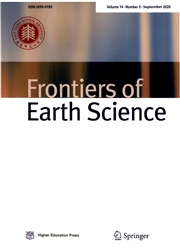On the effects of landscape configuration on summer diurnal temperatures in urban residential areas: application in Phoenix, AZ
作者:Yiannis KAMARIANAKIS,Xiaoxiao LI,B. L. TURNER II,Anthony J. BRAZEL
摘要:The impacts of land-cover composition on urban temperatures, including temperature extremes, are well documented. Much less attention has been devoted to the consequences of land-cover configuration, most of which addresses land surface temperatures. This study explores the role of both composition and configuration—or land system architecture—of residential neighborhoods in the Phoenix metropolitan area, on near-surface air temperature. It addresses two-dimensional, spatial attributes of buildings, impervious surfaces, bare soil/ rock, vegetation and the “urbanscape” at large, from 50 m to 550 m at 100 m increments, for a representative 30-day high sun period. Linear mixed-effects models evaluate the significance of land system architecture metrics at different spatial aggregation levels. The results indicate that, controlling for land-cover composition and geographical variables, land-cover configuration, specifically the fractal dimension of buildings, is significantly associated with near-surface temperatures. In addition, statistically significant predictors related to composition and configuration appear to depend on the adopted level of spatial aggregation.
发文机构:School of Mathematical and Statistical Sciences School of Geographical Sciences and Urban Planning School of Sustainability Global Institute of Sustainability
关键词:landsystemarchitectureurbanheatislandeffectlinearmixed-effectsmodelsNEAR-SURFACEairtemperatureLAND-COVERconfiguration
分类号: TP393.092[自动化与计算机技术—计算机应用技术][自动化与计算机技术—计算机科学与技术]
- Spatiotemporal influences of land use/cover changes on the heat island effect in rapid urbanization area
- A simplified index to assess the combined impact of tropical cyclone precipitation and wind on China
- Land use and land cover classification using Chinese GF-2 multispectral data in a region of the North China Plain
- Erosion-deposition patterns and depo-center movements in branching channels at the near-estuary reach of the Yangtze River
- Metal accumulation in Asiatic clam from the Lower Min River (China) and implications for human health
- Estimation of copper concentration of rocks using hyperspectral technology
- Chemical and minero-petrographical changes on granulite rocks affected by weathering processes
- BMA probability quantitative precipitation forecasting of land-falling typhoons in south-east China
- Accumulation of unconventional petroleum resources and their coexistence characteristics in Chang7 shale formations of Ordos Basin in central China
- Improvement of typhoon rainfall prediction based on optimization of the Kain-Fritsch convection parameterization scheme using a micro-genetic algorithm


